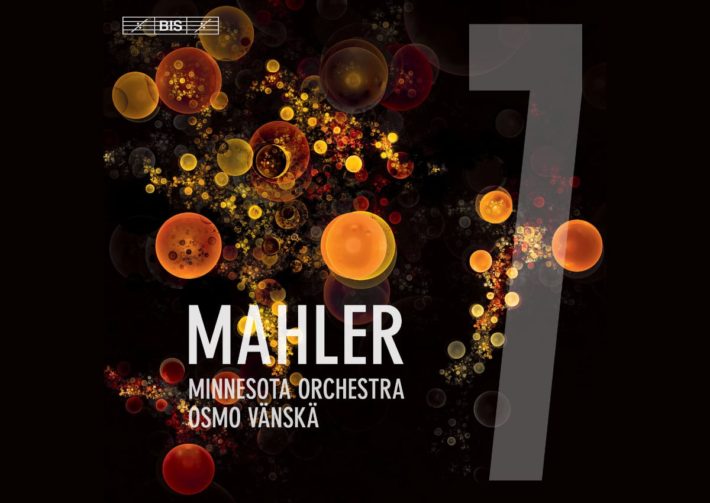Several months ago, I reviewed a recording by these performers of Mahler’s first symphony. I argued the performance was under characterized and emotionally reticent, and other recordings in the almost complete cycle have received similar criticism (Read our reviews of Symphonies No.1. No. 2 and No.4). So, I am doubly pleased to report that this newest entry in Minnesota Mahler cycle is far more impressive.

Mahler’s seventh symphony is sometimes derided as the “ugly duckling” – it is certainly the least recorded. Even for Mahler, its mood swings are extreme, and its harmonies often struggle against the boundaries of traditional tonality. (No wonder Schoenberg expressed great admiration for the work!) Yet its orchestration is astonishingly original, including a greatly expanded percussion section, mandolin and guitar.
BIS enables us to appreciate that astonishing orchestration in an exceptionally vivid recording, the soundstage deep and wide, mixed with enough room ambiance to add captivating warmth to the sound Yet the engineers (and Vänskä) ensure a transparency that clarifies even the densest polyphonic textures – both in a regular stereo and in SACD format.
The opening movement sets an ominous, brooding atmosphere, the solo tenor horn hauntingly played by R. Douglas Wright. Vänskä’s masterfully controls the Introduction’s many tempos changes, while the main Allegro risoluto (3’25”) brings a heightened, agitated energy from the orchestra. Vänskä excels at conveying frenetic mood changes (also apparent in his recording of Nielsen’s sixth symphony). He also ensures careful balance of discourse between soloists and instrumental choirs. The Minnesota brass are weighty (the horn playing particularly impressive) without ever swamping the woodwinds and strings. One really hears just how busy this music is, Mahler wrestling with multiple ideas and feelings simultaneously. At 11’08” the music changes again, taking us up to Mahler’s beloved mountains. There we are at one with nature, calmed by its overwhelming beauty, until the music again shifts to drag us down into more chaos and despair (14’18”). The coda is victorious but hard won, exactly as Mahler intends.
The three inner movements are convincing. Perhaps Abbado and Berlin instill an eerier atmosphere at the beginning of the second movement, but in Minnesota we get to hear more of the orchestral detail. Once again, Vänskä shepherds’ melodic discourse with great sensitivity, his players working with a chamber music like intimacy that serves Mahler’s writing exceptionally well. The percussion department ensures the cowbells are always a distinctive, yet ghostly part of the orchestral timbre, and the woodwind playing is consistently impressive – a particularly fine example is track 2, beginning at 7’00”.
The third movement, spectral and demonic, moves at a faster tempo than many recordings (8’42” versus Ivan Fischer’s 9’05” and Tennstedt’s 9’54”). Yet Vänskä can highlight previously unheard orchestral detail without ever losing track of the long line. Particularly enjoyable are the punchy interjections from bassoon and tuba, as well as the basses, plucking so hard that the strings hit the wood (track 3, 6’45”) – an effect that seems to leap out of the speaker.
Vänskä begins the final movement a little slowly, reigning in the orchestra too tightly, but by 1’10” the tempo has increased, and everything clicks into place. Mahler’s music incessantly shifts between varying emotions: one might consider this movement as a musical representation of multiple-personality disorder. Solti and Chicago make it a virtuosic showpiece for orchestra, missing most of the lighthearted humor. But Vänskä and his Minnesota players manage to fully capture the movement’s emotional twists and turns without ever taking the music, or themselves, too seriously.
The Minnesota Orchestra has grown since their recording of the first symphony, and they have developed a deeper understanding of Mahler’s sound world. While you will find grater neurosis in the Tennstedt and Bernstein recordings, those performances can, at times, feel overwrought. Vänskä strikes an almost ideal balance of head and heart, allowing us to feel the music’s many conflicting emotions as well as revel in its fantastic orchestral writing.
Mahler – Symphony No. 7
Minnesota Orchestra
Osmo Vänskä – Conductor
BIS Records, Hybryd SACD BIS-2386




















